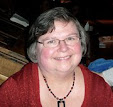It was surprising to me that I was able to get both a hardbound and Kindle copy of The Women so easily. They hype around this book for months was so omnipresent that it seemed unlikely that a copy would be available to read. Among my friends, who have read the novel, there were very diverse reactions. Some loved it and others couldn't finish it. I am probably right in the middle of those reactions.
The main character, Frances Gracie McGrath, aka Frankie, decides to enlist in the armed forces as a nurse to join her brother, Fin, who was a graduate of the Naval Academy and was sent to Viet Nam. She lived with her parents on Coronado Island, CA where they enjoyed a very comfortable, if not lavish, lifestyle. Her father, a staunch male chauvinist, was quite supportive of his son's service. However, with the mantra, "Women can be heroes, too" stuck in her mind, he vehemently opposed his daughter going off to war. The depiction of what the nurses and all the men serving in-country was heart-wrenching, considering what the reaction back in the States was during their service and upon their home-coming. Frankie is thought of as an excellent nurse who becomes a major part of the surgical teams. The trauma that rockets, napalm, and close calls gives the reader pause as to what conditions were like in the jungle.
As a major component of the novel, Frankie's romantic life is a roller coaster for sure. She has very strong feelings for Jaimie Callahan, a surgeon, who is severely wounded in an enemy attack. Then she falls head over heels in love with Rye Walsh, a friend of her brother's who was also serving. When Jamie and Rye are reported KIA, she is heartbroken and devastated. She is becomes engaged to Dr. Henry Avevedo, a psychiatrist who is working to help those Vets with PTSD, The relationships are filled with pain, trauma, and betrayal.
When Frankie returns after her two years of active duty, she must deal with the realization that her service was not respected by those who spat at her in the airport or her parents who firmly believed that she should not have enlisted. Her life spirals into one of PTSD, addiction, and depression. The reader shoulders most of that tragedy with her as Hannah describes it in detail.
Throughout the novel, there is one constant and that is the strong bond between two other nurses, Barbara and Ethel, who are there for Frankie in every crisis. This friendship was so deep and really the theme that impressed this reader the most. Women friends are the most faithful, dependable, devoted. They picked her up, tried to give advice, but were nonjudgmental. They were in stark contrast to her parents who were so about show and acceptance with their country club friends.
With all the depicted horrors of war and personal crises, The Women really is not what one would call an enjoyable read, but it was enlightening, as far as the "behind the scenes" in Viet Nam. I empathized with Frankie in her PTSD, but not so much in her romantic choices. In some ways, there was the feeling that Hannah was checking off all the boxes to see how many crises a woman could endure. Unfortunately, Frankie McGrath, suffered them all.











